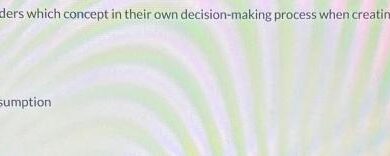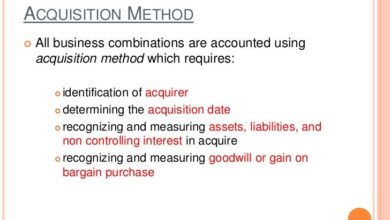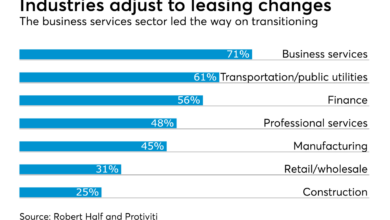
Paciolis Double-Entry Bookkeeping A Timeless System
Pacioli text double entry bookkeeping – Pacioli’s text on double-entry bookkeeping laid the foundation for modern accounting. This system, meticulously detailed by Luca Pacioli, revolutionized how businesses tracked transactions, providing a framework that remains relevant today. We’ll explore its historical context, fundamental principles, and enduring impact on financial reporting, alongside its evolution and modern applications. Understanding the core concepts and limitations of Pacioli’s double-entry bookkeeping is crucial for anyone seeking a deep understanding of accounting principles.
From its inception, Pacioli’s system provided a clear and reliable way to record transactions, ensuring that debits always equaled credits. This foundational principle of duality is at the heart of double-entry bookkeeping, providing a framework for accuracy and a basis for trustworthy financial statements. This system allows businesses to track their financial health, making informed decisions, and accurately reporting their performance.
Introduction to Pacioli’s Double-Entry Bookkeeping
Luca Pacioli, a Franciscan friar and mathematician of the Renaissance, is renowned for his contributions to various fields, including mathematics and accounting. His work,Summa de Arithmetica, Geometria, Proportioni et Proportionalita*, published in 1494, contained a groundbreaking section on bookkeeping. This treatise, although not the first to mention the system, solidified double-entry bookkeeping’s place in accounting history. It marked a significant shift from the rudimentary methods prevalent at the time, paving the way for more sophisticated and accurate record-keeping.Pacioli’s work, far from being a simple manual, was a sophisticated exploration of accounting principles.
He meticulously detailed the fundamental concepts that underpinned the double-entry system, focusing on the importance of balancing debits and credits. This emphasis on balance was revolutionary and laid the groundwork for modern accounting practices. Understanding this context is crucial to appreciating the lasting impact of his treatise.
Historical Context of Pacioli’s Work
Pacioli’sSumma* emerged during a period of significant economic growth and commercial expansion in Europe. The burgeoning trade routes and burgeoning merchant classes demanded more sophisticated methods of tracking transactions. Existing bookkeeping methods were often cumbersome and prone to errors, making them inadequate for the increasing complexity of financial activities. This demand for a more precise and reliable system created fertile ground for Pacioli’s innovation.
Key Concepts of Double-Entry Bookkeeping
Pacioli’s double-entry system relies on the fundamental principle that every financial transaction affects at least two accounts. This dual impact is crucial for maintaining the balance sheet equation: Assets = Liabilities + Equity. This core principle ensures that the total debits always equal the total credits. This ensures accuracy and prevents errors. This concept, while seemingly simple, was revolutionary at the time.
Significance of Pacioli’s Treatise
Pacioli’s treatise had a profound impact on the development of accounting practices. It formalized the double-entry system, providing a structured framework for recording financial transactions. His work became a standard reference for merchants and accountants, influencing accounting practices for centuries. This standardization and clear explanation of the system, provided by Pacioli, contributed significantly to the reliability and accuracy of financial records.
Major Components of Pacioli’s System
The following table summarizes the key components of Pacioli’s double-entry bookkeeping system. This table offers a clear view of the interconnected nature of the system.
| Component | Description |
|---|---|
| Debits | Represent increases in asset accounts and decreases in liability and equity accounts. |
| Credits | Represent increases in liability and equity accounts and decreases in asset accounts. |
| Journal Entries | Detailed records of all transactions, showing both debit and credit sides. |
| Ledger Accounts | Organized summaries of transactions affecting specific accounts. |
| Trial Balance | A summary of all debits and credits to ensure the equality of both sides. |
Understanding the Principles of Double-Entry Bookkeeping
Luca Pacioli’s revolutionary double-entry bookkeeping system, detailed in his 1494 treatise, revolutionized financial record-keeping. It’s a fundamental accounting method still used today, forming the bedrock of modern financial reporting. This system, unlike simpler methods, provides a comprehensive and balanced view of a business’s financial transactions.The core of double-entry bookkeeping lies in its meticulous tracking of every financial exchange. Every transaction affects at least two accounts, ensuring a balanced accounting equation.
This interconnectedness prevents errors and allows for a precise picture of a company’s financial health.
Debit and Credit Fundamentals
Double-entry bookkeeping hinges on the concepts of debit and credit. These aren’t simply labels; they represent the impact a transaction has on different accounts. Debits and credits are recorded in a systematic manner, reflecting the dual nature of each transaction. A debit increases asset, expense, and dividend accounts, while decreasing liability, owner’s equity, and revenue accounts. Conversely, a credit increases liability, owner’s equity, and revenue accounts, while decreasing asset, expense, and dividend accounts.
This seemingly simple duality is the cornerstone of the system’s accuracy.
The Duality Principle in Accounting
The duality principle is a fundamental concept in accounting, and it forms the core of double-entry bookkeeping. It posits that every transaction has two sides, affecting at least two accounts in a balanced way. For example, if a business buys supplies on credit, the asset account (supplies) increases, and the liability account (accounts payable) also increases. This interconnectedness ensures that the accounting equation (Assets = Liabilities + Equity) remains balanced at all times.
This crucial principle guarantees the accuracy and reliability of the financial records.
Assets = Liabilities + Equity
Double-Entry vs. Other Methods
Compared to single-entry bookkeeping, double-entry provides a significantly more comprehensive and accurate record. Single-entry only tracks one side of a transaction, leaving the system vulnerable to errors and potentially obscuring the true financial position. Other methods, like cash accounting, focus primarily on the cash inflows and outflows, which can be insufficient for complex financial analyses. Double-entry bookkeeping provides a more holistic view, capturing both cash and credit transactions, enabling a deeper understanding of the business’s financial performance.
Effects of Transactions on the Accounting Equation
The following table illustrates how various transactions affect the accounting equation.
| Transaction | Effect on Assets | Effect on Liabilities | Effect on Equity |
|---|---|---|---|
| Cash purchase of supplies | Increase | No change | No change |
| Providing services on credit | Increase (accounts receivable) | No change | Increase (revenue) |
| Payment of salaries | Decrease | No change | Decrease (expense) |
| Borrowing money from a bank | Increase (cash) | Increase (loan payable) | No change |
This table demonstrates how double-entry bookkeeping ensures that the accounting equation remains balanced, regardless of the transaction type. Each transaction affects at least two accounts, ensuring accuracy and reliability in the financial records.
Practical Applications of Pacioli’s System

Pacioli’s double-entry bookkeeping system, while centuries old, remains a cornerstone of modern accounting. Its elegance and logical structure provide a framework for tracking financial transactions with precision and accuracy. This fundamental system, meticulously detailed by Pacioli, continues to be essential for businesses of all sizes, ensuring financial clarity and reliability.The system’s enduring relevance stems from its inherent ability to maintain a balanced accounting equation.
This means that for every transaction, there’s a corresponding debit and credit entry, reflecting the duality of every financial activity. This meticulous record-keeping allows businesses to track assets, liabilities, and equity with absolute clarity, providing a reliable picture of their financial health.
Benefits of Implementing Pacioli’s System in Modern Business Practices
Implementing Pacioli’s double-entry system offers significant advantages in modern business environments. It fosters transparency in financial reporting, enabling informed decision-making and effective financial planning. The meticulous record-keeping also allows for precise analysis of financial performance, enabling identification of trends and potential areas for improvement. The system’s inherent accuracy and structure mitigate the risk of errors and discrepancies, contributing to the overall reliability of financial data.
Applications in Different Industries
Pacioli’s system finds application across a broad spectrum of industries. Retail businesses, for example, use it to track sales, inventory, and expenses, ensuring a clear picture of profitability. Manufacturing companies leverage the system to monitor production costs, raw material expenses, and finished goods inventory. Service-oriented businesses, such as law firms or consulting companies, utilize the system to track client fees, expenses, and profits.
The consistent application of the double-entry method is crucial for accurate financial reporting across these diverse industries.
Transaction Recording Using the Double-Entry Method
Double-entry bookkeeping involves recording each transaction with corresponding debit and credit entries. For example, if a company purchases office supplies for $500 in cash, the cash account is debited, and the office supplies account is credited. This ensures that the accounting equation (Assets = Liabilities + Equity) remains balanced.
- Purchase of Supplies: To illustrate, imagine a bookstore purchasing $1,000 worth of new books. The bookstore pays for these books with cash. The cash account is debited, and the inventory account (books) is credited. This maintains balance, ensuring the total debits equal the total credits.
- Sale of Goods: When the bookstore sells books for $800 in cash, the cash account is debited, and the sales revenue account is credited. The inventory account is also affected. To accurately reflect the change in inventory, the cost of goods sold (COGS) account is debited, and the inventory account is credited. This demonstrates the comprehensive nature of the double-entry system.
Types of Accounts and Debit/Credit Rules
Understanding the debit and credit rules for different account types is fundamental to applying Pacioli’s system effectively. The following table Artikels the typical debit and credit rules for various accounts.
| Account Type | Debit | Credit |
|---|---|---|
| Assets | Increase | Decrease |
| Liabilities | Decrease | Increase |
| Equity | Decrease | Increase |
| Expenses | Increase | Decrease |
| Revenues | Decrease | Increase |
The table above presents the fundamental debit and credit rules, ensuring the balance sheet remains balanced and financial statements accurately reflect the company’s financial position.
Evolution of Double-Entry Bookkeeping: Pacioli Text Double Entry Bookkeeping
Luca Pacioli’s treatise on double-entry bookkeeping, published in 1494, laid the foundation for modern accounting practices. His system, though rudimentary compared to today’s standards, introduced the fundamental principles that continue to underpin financial record-keeping. This method provided a robust and reliable way to track transactions, unlike the simpler methods of the time.The core principles of double-entry bookkeeping – every transaction affects at least two accounts, and debits must always equal credits – remained unchanged.
However, the practical application and the tools used to implement it have evolved significantly over the centuries.
Impact of Technology on Double-Entry Bookkeeping
Technology has dramatically reshaped the way double-entry bookkeeping is performed. The advent of computers and software has streamlined the process, reducing manual errors and significantly increasing efficiency. Automated data entry, calculations, and reporting capabilities have revolutionized the entire accounting cycle. This automation has freed accountants from tedious manual tasks, allowing them to focus on more complex analyses and strategic decision-making.
Modern Software and Tools Supporting Double-Entry
Today, numerous software applications and tools support double-entry bookkeeping, providing accountants and businesses with powerful functionalities.
- Accounting Software Packages: Sophisticated accounting software packages, like QuickBooks, Xero, and Sage, automate the entire process, from transaction recording to financial reporting. These programs use double-entry bookkeeping principles to ensure accuracy and balance. They typically offer features for inventory management, customer relationship management (CRM), and financial forecasting, seamlessly integrating with the core double-entry system.
- Cloud-Based Solutions: Cloud-based accounting software has become increasingly popular. These solutions offer real-time data access, collaboration features, and automatic updates, enhancing accessibility and efficiency for businesses of all sizes. These solutions utilize double-entry principles to maintain accurate financial records.
- Spreadsheet Software: While not dedicated accounting software, spreadsheets like Microsoft Excel can be used to implement double-entry bookkeeping for smaller businesses or personal finance tracking. Users need to meticulously apply the double-entry principles to ensure accurate financial records.
Differences Between Manual and Computerized Systems
Manual double-entry bookkeeping involves meticulously recording transactions on paper, using ledgers, journals, and spreadsheets. This method requires significant attention to detail to prevent errors. Computerized systems, on the other hand, automate many of these tasks, reducing the chance of errors and increasing the speed of processing. This automation can be crucial for businesses handling a large volume of transactions.
| Feature | Manual System | Computerized System |
|---|---|---|
| Transaction Recording | Handwritten entries in journals and ledgers | Automated data entry through software interfaces |
| Calculations | Manual calculations using calculators or spreadsheets | Automated calculations and balancing |
| Reporting | Manual preparation of reports using data from ledgers | Automated generation of reports and financial statements |
| Error Rate | Higher potential for errors due to manual handling | Lower error rate due to automated processes |
| Efficiency | Slower processing time | Faster processing time and greater efficiency |
“Double-entry bookkeeping ensures that the accounting equation (Assets = Liabilities + Equity) remains balanced at all times.”
Pacioli’s System and Modern Accounting Standards
Luca Pacioli’s treatise on double-entry bookkeeping, while written centuries ago, laid the groundwork for modern accounting practices. His system, with its emphasis on balancing debits and credits, remains a cornerstone of financial record-keeping. This exploration delves into the enduring relevance of Pacioli’s principles within today’s accounting standards.Pacioli’s double-entry bookkeeping system, while conceptually simple, profoundly impacted the way businesses tracked transactions.
His principles of ensuring every transaction affects at least two accounts, maintaining the equality of debits and credits, and recording transactions chronologically, provided a framework for accurate and reliable financial reporting. These principles continue to form the bedrock of modern accounting systems. Contemporary accounting standards, though more complex, build upon these foundational ideas.
Alignment with Contemporary Accounting Standards
Pacioli’s core principle of double-entry bookkeeping directly aligns with the fundamental accounting equation, which states that Assets = Liabilities + Equity. Every transaction affects both sides of the equation, preserving the balance. Modern accounting standards, like Generally Accepted Accounting Principles (GAAP), build upon this principle by specifying the precise methods for recording and reporting various transactions. The core concept of ensuring every transaction affects at least two accounts is a direct descendant of Pacioli’s system.
These standards detail how assets, liabilities, and equity should be presented and valued.
Comparison with Modern Accounting Frameworks
While Pacioli’s system provided a basic framework, modern accounting frameworks like GAAP and International Financial Reporting Standards (IFRS) provide far more detailed guidance. These frameworks address complex financial instruments, international transactions, and specific industry requirements, which Pacioli’s work did not anticipate. For example, GAAP provides detailed rules for valuing inventory, recognizing revenue, and accounting for depreciation, whereas Pacioli’s work focused on basic transaction recording.
The evolution from Pacioli’s system to modern frameworks reflects the growth and complexity of the global business environment.
Relevance in Today’s Business Environment
Despite the advancements, Pacioli’s core principles remain critically important in today’s business environment. The fundamental concept of ensuring every transaction is recorded accurately and completely, preserving the balance between debits and credits, remains essential. This is crucial for stakeholders, including investors, creditors, and management, to have a clear and accurate understanding of a company’s financial position. The principle of double-entry bookkeeping continues to be a powerful tool in fraud detection, as inconsistencies in the system can be quickly identified.
This underlines the importance of meticulous recording and reconciliation.
Contrasting Pacioli’s System with GAAP
| Feature | Pacioli’s System | GAAP |
|---|---|---|
| Basic Principles | Double-entry bookkeeping; debits and credits; chronological recording. | Fundamental accounting equation (Assets = Liabilities + Equity); accrual accounting; matching principle; consistency principle; materiality principle; etc. |
| Transaction Recording | Focus on basic transactions. | Detailed rules for various transactions (e.g., inventory valuation, revenue recognition, depreciation, etc.). |
| Financial Statement Presentation | Basic balance sheet and income statement. | Detailed formats for financial statements, including specific disclosures and notes. |
| Valuation Methods | Generally relied on historical cost. | Offers various valuation methods (e.g., fair value, cost, etc.), depending on the nature of the asset or liability. |
| Complexity | Simple, primarily focused on recording transactions. | Complex, with numerous standards and rules to follow. |
“Pacioli’s work was a crucial step in the development of modern accounting. While his system is a foundation, it’s crucial to understand that it is only a part of the larger picture, with contemporary accounting standards being far more detailed and nuanced.”
Illustrative Examples of Transactions
Luca Pacioli’s double-entry bookkeeping revolutionized financial record-keeping. Understanding how this system works involves tracing the effects of business transactions on the accounting equation. These examples demonstrate the core principles, showing how debits and credits balance, ultimately reflecting the business’s financial position.
Illustrative Transactions and their Impact
The core of double-entry bookkeeping lies in the principle of duality, where every transaction affects at least two accounts. This ensures that the accounting equation (Assets = Liabilities + Equity) remains in balance. Let’s examine some illustrative transactions and how they impact the equation.
Transaction 1: Purchase of Supplies
A business purchases office supplies for cash. This transaction affects the assets account (supplies) and the asset account (cash). The supplies account increases, while the cash account decreases.
- Assets: Supplies increase, Cash decreases. The accounting equation remains in balance.
Transaction 2: Providing Services on Credit
A consulting firm provides services to a client for $500 on account. This transaction increases both accounts receivable (an asset) and service revenue (equity).
- Assets: Accounts Receivable increases. Equity: Service Revenue increases.
Transaction 3: Payment of Rent
A business pays rent for the month. This transaction affects the expense account (rent expense) and the asset account (cash). Rent expense increases, while cash decreases.
- Assets: Cash decreases. Equity: Rent Expense increases. The accounting equation remains balanced.
Transaction 4: Owner Investment
The owner invests additional capital into the business. This transaction increases both cash (an asset) and owner’s equity.
- Assets: Cash increases. Equity: Owner’s Equity increases.
Recording Transactions Using T-Accounts
T-accounts visually represent the impact of each transaction on specific accounts. A T-account has three sections: a debit side, a credit side, and the account name. Debits are recorded on the left side, and credits are recorded on the right side.
| Account | Debit | Credit |
|---|---|---|
| Cash | $1000 | $500 |
| Supplies | $500 | 0 |
In the first example, a cash deposit of $1000 is recorded as a debit to the cash account, and a $500 withdrawal as a credit. Supplies purchased for $500 are recorded as a debit to the supplies account.
Significance of Transactions on Financial Position
Each transaction impacts the financial position of the business. The purchase of supplies increases the business’s inventory, while the payment of rent reduces its cash balance. The key is to meticulously record these changes to maintain an accurate and up-to-date financial picture of the company’s activities. By using the double-entry method, the accounting equation always remains in balance, providing a reliable representation of the business’s assets, liabilities, and equity.
Limitations of Pacioli’s System
Pacioli’s groundbreaking work on double-entry bookkeeping laid the foundation for modern accounting. However, the system, while revolutionary for its time, had inherent limitations when viewed through the lens of contemporary business practices. Understanding these limitations is crucial for appreciating the evolution of accounting and the necessity for adjustments in modern applications.The system, designed for relatively small-scale businesses in the 15th century, lacked the sophistication to handle the complexities of larger enterprises and the expanding global trade networks that emerged later.
This inherent simplicity also makes it vulnerable to certain types of errors or fraud if not implemented meticulously.
Limitations in Handling Complex Transactions
Pacioli’s system, while robust for its time, struggled with the increasing complexity of transactions in larger organizations. The manual nature of recording and balancing accounts in the system could become cumbersome with numerous transactions, potentially leading to errors. Reconciling accounts and identifying discrepancies in large volumes of data was also more time-consuming. Furthermore, the system didn’t account for the emergence of sophisticated financial instruments and complex business structures that characterized the later development of capitalism.
Limitations in Data Aggregation and Analysis
The lack of advanced tools for data aggregation and analysis presented a significant limitation. Manual recording and calculations made it challenging to extract meaningful insights from financial data. Analyzing trends, identifying profitability issues, or forecasting future performance was significantly more difficult compared to modern techniques.
Limitations in Automation and Efficiency
Pacioli’s system relied entirely on manual processes. This inherent limitation posed significant problems for larger businesses experiencing substantial transaction volumes. The absence of automation restricted the speed and accuracy of financial reporting, potentially hindering decision-making. Modern accounting software and systems, on the other hand, can automate numerous tasks, drastically improving efficiency. Modern systems allow for faster processing, less prone to errors, and offer more comprehensive data analysis capabilities.
Comparison to Modern Accounting Software
| Feature | Pacioli’s System | Modern Accounting Software |
|---|---|---|
| Data Entry | Manual, prone to errors with large volumes | Automated, significantly reduced error rates |
| Data Analysis | Limited, manual calculations and analysis | Sophisticated tools for trend analysis, forecasting, and reporting |
| Automation | Non-existent | Automated processes for various accounting functions |
| Scalability | Limited to smaller businesses | Adaptable to businesses of all sizes |
Modern accounting software has overcome these limitations by automating processes, enabling sophisticated data analysis, and providing scalability to handle complex transactions and large volumes of data. Modern accounting software effectively addresses the limitations of Pacioli’s system through technological advancements, resulting in more efficient and accurate financial reporting.
Impact on Financial Reporting

Pacioli’s double-entry bookkeeping system revolutionized financial record-keeping, profoundly impacting how businesses report their financial health. This system’s inherent structure significantly enhances the accuracy and reliability of financial statements, fostering transparency and trust in the reported information. Understanding the implications of this system is crucial for evaluating the validity and trustworthiness of financial data.The core principle of double-entry bookkeeping, where every transaction affects at least two accounts, inherently creates a system of checks and balances.
This built-in mechanism is a powerful tool for ensuring accuracy in financial reporting, and is fundamental to the reliability of financial statements.
Role in Financial Statements
Double-entry bookkeeping forms the bedrock of financial reporting. It ensures that every transaction is meticulously recorded, affecting both the debit and credit sides of accounts. This systematic approach facilitates the preparation of accurate financial statements, including the balance sheet, income statement, and cash flow statement. These statements provide a comprehensive picture of a company’s financial performance and position.
Ensuring Accuracy and Reliability
The system’s inherent structure ensures accuracy. Every transaction must have a corresponding debit and credit entry. This double-entry ensures that the total debits always equal the total credits. This equality is crucial for maintaining the integrity of the accounting equation (Assets = Liabilities + Equity). This fundamental equation underpins the entire financial reporting process.
The system’s built-in checks and balances, when properly applied, greatly reduce the likelihood of errors and omissions.
Implications of Inaccurate Record-Keeping
Inaccurate record-keeping in double-entry systems has significant implications. Errors in recording transactions can lead to misstatements in financial statements. This can result in misleading investors, creditors, and other stakeholders about the company’s true financial position and performance. Further, incorrect data can impact tax calculations, lending decisions, and strategic business planning. It is critical to maintain meticulous records to avoid such consequences.
Maintaining Debit and Credit Balance, Pacioli text double entry bookkeeping
The system’s inherent structure ensures the balance between debits and credits. This crucial aspect of double-entry bookkeeping is fundamental to accurate financial reporting. The principle of debit and credit equality is a cornerstone of the accounting equation. Any discrepancy between debits and credits indicates an error that must be identified and corrected before accurate financial reporting can proceed.
A simple example illustrates this principle: If a company purchases supplies for cash, the Cash account is debited, and the Supplies account is credited. The debit and credit entries are equal in value, maintaining the balance in the accounting equation.
Final Conclusion
In conclusion, Pacioli’s double-entry bookkeeping, despite its age, continues to be a cornerstone of modern accounting practices. Its principles of debit and credit, the duality principle, and the meticulous record-keeping it encourages are vital for maintaining financial integrity. While modern technology has streamlined the process, the core concepts remain the same. Understanding Pacioli’s system offers a valuable insight into the history and principles of accounting, and provides a framework for navigating the complexities of modern financial reporting.





